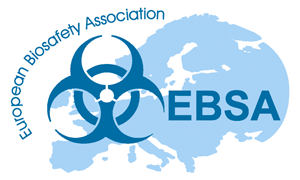Past EBSA courses
-
13 May 2014
EBSA17 - Course I -Biosafety contribution to responsible science
Read moreThe vast majority of biologists enter the field because they have a passion to make the world better by understanding organisms and the systems they live in. We dream of improving the world's health through combatting disease, improving nutrition and protecting species and the environment.
-
13 May 2014
EBSA17 - Course H -Design for biological facilities - how to be an 'intelligent customer'
Read moreBuilding new containment facilities or revamping existing biological laboratories is generally an important step in the development of an organization. It is also a challenge for all those involved in the project, including the laboratory users and the biorisk management advisor.
-
13 May 2014
EBSA17 - Course G - Laboratory acquired infection - updates and lessons learned
Read moreThe purpose of biosafety is to prevent exposure to biological agent especially that which leads to infection. It is therefore important to know the causes and circumstances in which laboratory acquired infections occur in clinical, veterinary and research work and the lessons learned from those.
-
13 May 2014
EBSA17 - Course F - Biocontainment principles - includes primary and secondary systems
Read moreBiocontainment constitutes the combination of engineering controls and infrastructure that support and complement the biosafety protocols adopted in biocontainment laboratories.
-
13 May 2014
EBSA17 - Course E -Animal facility operations
Read moreThe pre-conference course on "Animal facility operations" aims at biosafety professionals that are or will be involved in activities with small and/or large animals at different containment level. The main driver of the course is the question how the interaction between animal, pathogen and experimental set-up affects biosafety and biosecurity.
-
13 May 2014
EBSA17 - Course D - Biosafety in plant growth & plant pathogen facilities
Read moreThis 1.5 day course aims at providing researchers, biosafety professionals and facility managers a practical insight into the assessment of risk, design, operation and management of contained use activities in plant growth and plant pathogen facilities. This includes work with GMOs (plants, (non-)pathogenic micro-organisms, invertebrates) as well as with (quarantine) pests and diseases.
-
13 May 2014
EBSA17 - Course C - Design and implementation of a biorisk management system
Read moreRecent breaches of biosafety and biosecurity have emphasised that management failure is normally the root cause of accidents and incidents with biological agents and toxins. Implementation of a systematic biorisk management system, e.g. adopting the CWA 15793 can help organisations manage these risks.
-
13 May 2014
EBSA17 - Course B - Auditing: a comprehensive and practical introduction
Read moreThis two day practical course provides a comprehensive and sound practical introduction to auditing. The course takes participants through the principles, recognized best practices and essential techniques of (HSE / biosafety) auditing.
-
13 May 2014
EBSA17 - Course A - Better biological risk assessment using appropriate methodologies and tools
Read moreManagement of risks related to activities with hazardous biological material, be it research, development, production or diagnostics, requires risk assessment at various stages of the activity. To begin with, the hazards of the various biological materials need to be estimated. When genetic modification is involved methods and tools such as viral vectors, plasmids and types of inserts need to be considered. At a second stage biosafety and biosecurity measures need to be evaluated for their ability to contain the biological material. These measures on their own, whether organizational or technical, have their weaknesses and might be vulnerable to failures which need to be taken into account in incident and accident prevention. Advance application of several techniques (such as Fishbone, HAZOP, LOPA, SWIFT, Kinney, FMEA, HACCP, SSQ, Fault-tree, Bow tie, Brenner … ) to manage and assess risk especially in the areas of genetic modification, materials that have an insufficiently defined risk or information, animal and plant related work.
